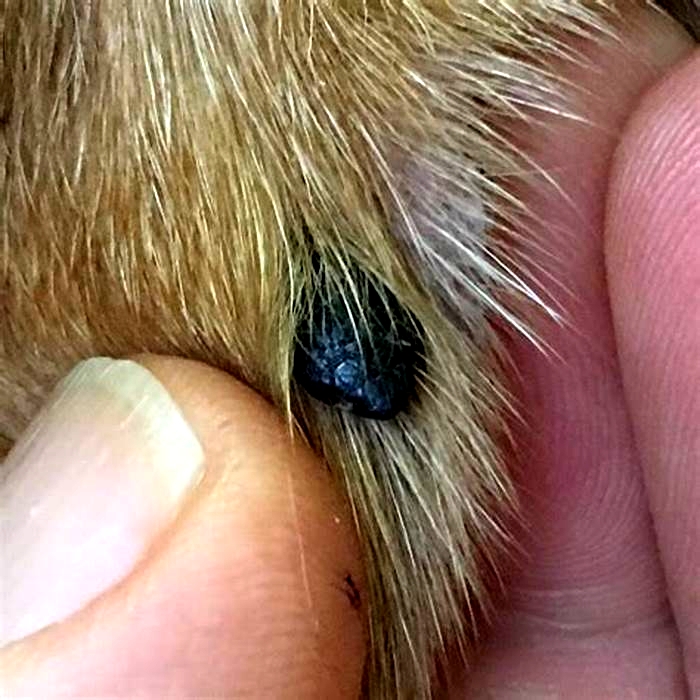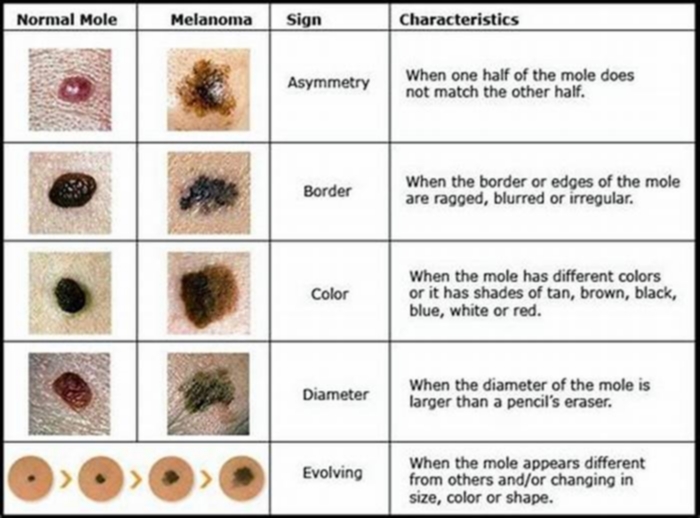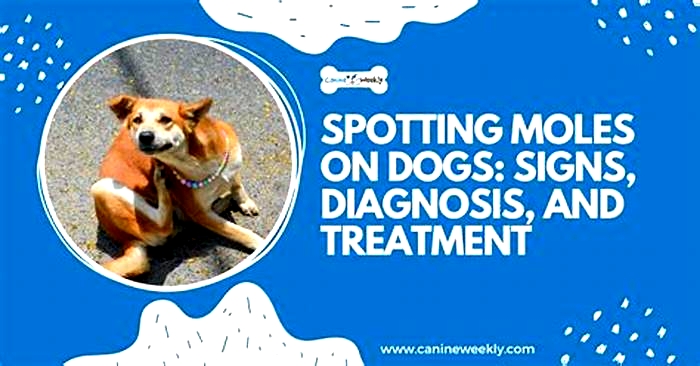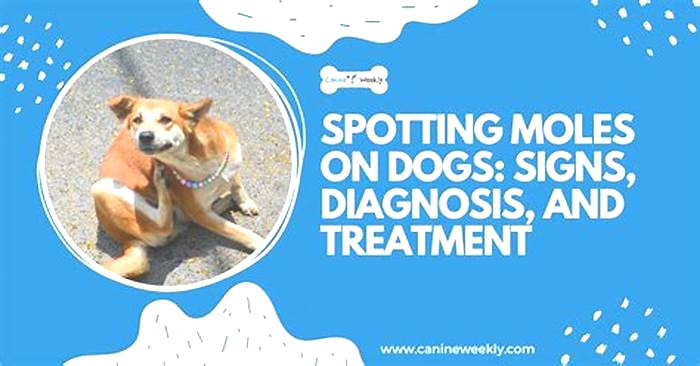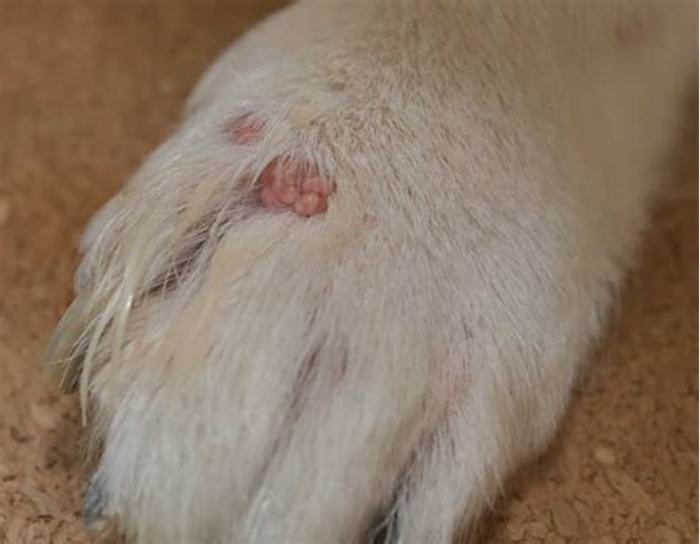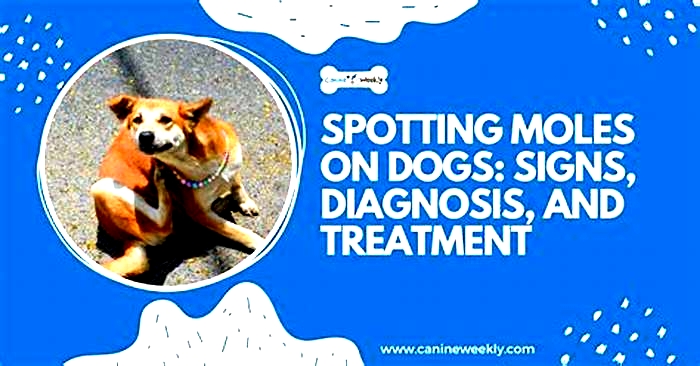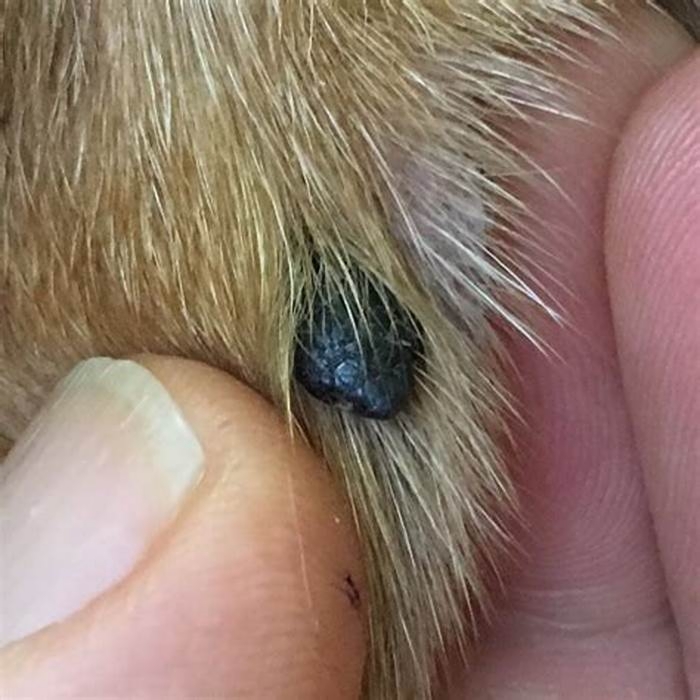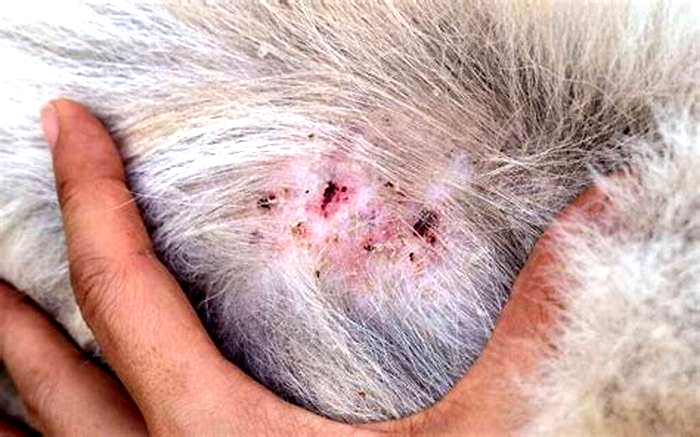Why is my dog getting black moles
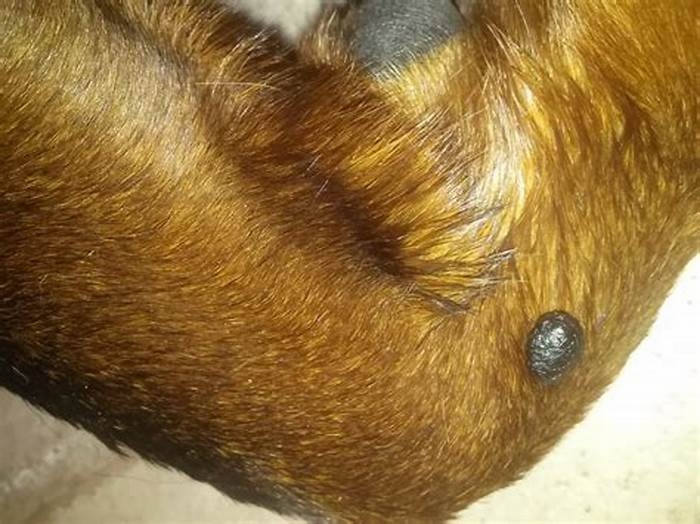
Spotting Moles on Dogs:Signs, Diagnosis, and Treatment
This post may contain affiliate links. If you click and buy we may make a commission, at no additional charge to you. Please see our disclosure policy for more details.
You might have observed some dark spots that may be flat or raised, mostly around the neck, chest, or back of your dogs.
Moles in dogs are common but not as common as in humans. Moles in dogs are generally treated by surgical methods.
Moles in dogs are often harmless, but if there are changes in their size, shape, or any other form, they must be checked by a veterinarian.
You are in the right article if you are worried about your dog having moles or want to know the signs, diagnosis, or treatment.
This read will provide complete information regarding moles in dogs and every need-to-know detail.
Can Dogs get Moles?
Yes, dogs can develop moles, and it is very common, especially for dark-pigmented skin dogs, just as not common as humans.
Most often, they are not harmful, but as in human cases, changes in shape, size, or color in moles can be a sign of some disease and must be checked as soon as possible.
A mole, also called a nevus, is found on dogs body parts that are prone to trauma, such as the neck, chest, or back, especially in older dogs.
Does my Dog have Moles?
Determining if your dog has moles could be tricky. Normal moles do not display significant discomfort and are hard to notice at first.
Moles are different from skin tags. Moles are broad and flat with a dark texture and sizes around a quarter inch in diameter.
They develop in both male and female dogs, although male dogs tend to have them more often than their female counterparts.
Mast cell tumors, carcinoma, and malignant melanoma are three types of cancerous skin lesions that are confused with moles but are not.
Also, ticks are confused with moles due to their similar appearance, and people try to pull that off the dogs skin, thinking it is a tick. Use magnifying equipment to determine, and if unsure, visit a veterinarian.
Ticks have legs out and can be recognized by this, but if you try and pull out a mole thinking its a tick, it will be painful, cause irritation to your dog, and may result in bleeding.
To be cautious, its always wise to get your dog checked to determine if your dog has developed a mole or something else, as things looking like a mole can be a cancerous tumor.
Why do Moles Grow in Pets?
There seems to be no exact reason why moles and other similar diseases like skin tag develops in dogs, but there are some factors that may lead to these skin irregularities. They are:
Genetic
The easiest way for your dog to develop moles is through genetics. These moles or skin issues generally run in the family, and some dogs are more prone to get this than other breeds.
Check-ups and tests prior to adoption can show if the dog has been exposed to some diseases or irregularities. Breeds like Golden Retrievers, Irish Setters Dobermans are some dogs who tend to develop mole more often.
Medicinal Side Effects
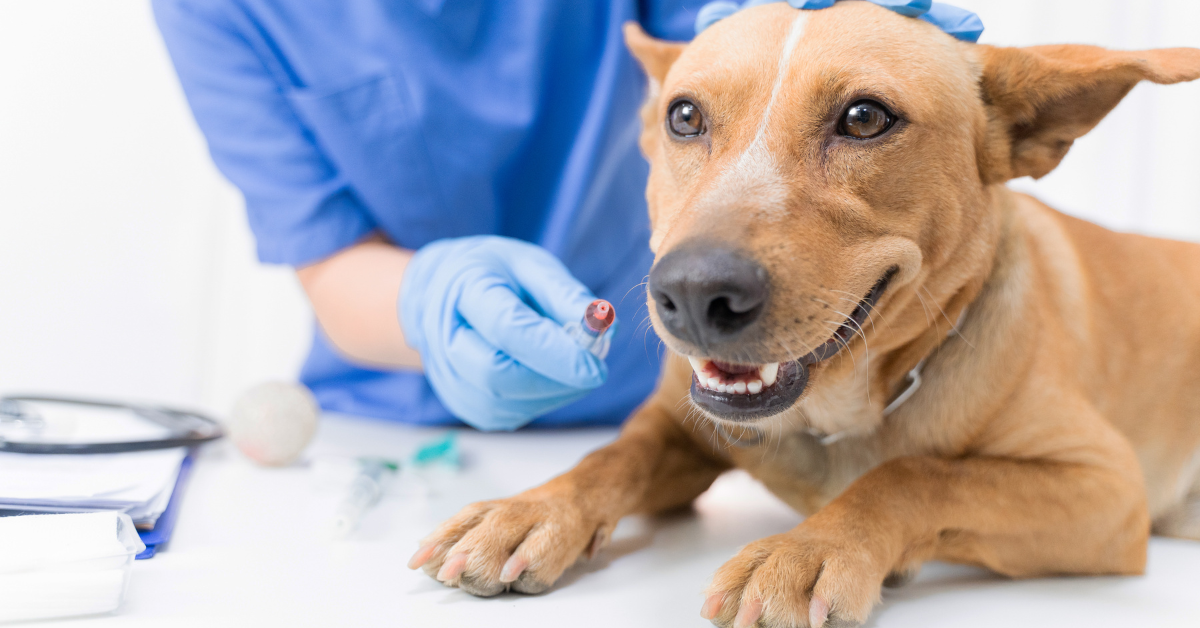
Some medicines have side effects that can lead to skin infections, moles, skin tags, and other irregularities.
Age Factor
Age is also a factor, as older dogs tend to get moles more often than small dogs. Moles develop from the age of 5 to 11 years.
How do I Treat my Dogs Moles?
The benign moles are often harmless and do not require much treatment until the dog is feeling discomfort or the moles start changing their size or shape.
If the vet feels the need to treat the mole or it occurs to be a fatal disease like cancerous, then the mole can be removed surgically by giving just anesthesia or painlessly frozen by cryosurgery.
After surgery, your dog can get back to a regular routine. Dogs might need an e-collar around their neck or the surgical area to prevent them from scratching or licking the surgical wound.
Are Moles Similar in Dogs and Humans?
Moles are mostly similar in all species, be they animals or humans. Dog moles are very similar to humans.
Most moles appear early in a persons life, meaning that animals with shorter lifespans will typically develop their moles in the same space of time that humans do.
In canines, moles growth has melanin in a higher concentration level around the surrounding tissue, making the color of the mole darker.
Moles in both humans and animals can turn out to be cancerous, and any irregularities should be brought to medical attention without delay.
FAQs
Q. When should my dog see a vet for a mole?A: If a mole is changing its shape, size, or color, then you should see a veterinarian. If the mole is in a place that bothers the dog, you can remove it easily.
Q. Is it OK for dogs to have moles?Yes, it is totally okay for dogs to have moles. Moles in dogs generally appear in the chest, face, or back of the body.It is mainly unharmful, and it is up to you if you want to remove it.
Q. How do you stop a mole from bleeding on a dog?To stop the bleeding, take a clean towel or cotton cloth and apply pressure on the mole. When the bleeding stops, clean it with mildly warm water.Stopping the bleeding also depends on the type of wound; minor cuts can be stopped by applying pressure. Big cuts will take time; while applying pressure, take the dog to a veterinarian.Bleeding from moles can happen if your dog has scratched or bitten the mole or a cut from sharp objects.
Conclusion
Your canine partner can develop moles, which are very common and harmless. This article provided information about the signs, diagnosis, and treatment of moles in dogs.
We hope reading this article clears your doubt about why dogs have moles, how you can treat them, and whether it is dangerous or not.
If your dog develops a mole, check them frequently and take them to a veterinarian if any changes take place in moles.
Till then, take care and happy petting.
[wpdatatable id=68 responsive= stack responsive_breakpoint=phone/]
Dr. Lillian is a D.V.M. passionate about promoting awareness of dogs. She shares her expertise through her blogs on canineweekly.com and provides animal care services, including internal medicine, dermatology, and emergency care. Dr. Lillian is committed to contributing to animal welfare.
Finding a Mole on Your Dog

Dogs get moles just like people do. A mole is a small growth on the skin also called a nevus. Moles are not the same as skin tags, in that moles tend to be flatter with a broader base. Skin tags protrude more from the skin and are usually connected by a slender stalk. Either way, both these lesions are benign.
Your dog may get pink, white, gray, or black moles. They are typically small, less than a quarter inch in diameter. They usually have a smooth surface as opposed to a wart which has a cauliflower-like surface and are hairless.
The first time you see any skin growth on your dog, its a good idea to have it checked by your veterinarian just to be sure it isnt something more harmful. There are two cancerous skin lesions that can initially look like a mole: mast cell tumors and malignant melanoma. Your veterinarian may take a sample using a fine needle aspirate and submit it for testing (cytology) to rule out these malignancies.
Be advised, ticks and moles look a lot alike upon cursory inspection. Before you start trying to pull off that mole, thinking its a tick, look closely, using a magnifying glass if necessary. If its a tick, you should be able to see the legs sticking out. Your dog will not appreciate your efforts toward removing a mole, and you will likely get it irritated and bleeding.
Once its been confirmed that your dogs skin growth is a mole, there is no need to have it removed. Careful monitoring, however, is advised. Benign lesions dont change much. Causes for concern include any change in color, size, or texture. Irregular, jagged edges forming in an originally smooth border is suspicious, as is a previously quiet lesion that suddenly seems to be bothering your dog. If any of these things are happening, get to the vet.
If you want to have a mole electively removed for whatever reason (e.g., cosmetic, groomer keeps nicking it, the dog keeps licking it, it keeps bleeding), this is usually easily achieved. Many veterinarians now have cryotherapy units and can quickly and painlessly freeze the mole off. Alternatively, most moles can be easily surgically removed using just local anesthesia.
Lumps and Bumps on Dogs Skin: Signs, Symptoms, Causes
What is that strange bump on your dog? Discovering a skin lump or bump on your dog can set your mind reeling and heart racing, but theres no need to panic. A bump on your dog doesnt automatically mean cancer. While skin bumps and strange lumps on dogs should always be taken seriously, certain types of bumps are more common than you might think, and theyre often harmless.
Types of Skin Lumps and Bumps on Dogs
Skin bumps that youre likely to find on your dog fall into several categories. Some of these are more common in older dogs. As a new puppy owner, youll want to file these away and keep an eye out for them as your pup ages. While some of these are non-cancerous, some can be caused by infections or other underlying conditions. Its always best to have a veterinarian examine and diagnose anychanges to your dogs skinand determine a course of treatment, if needed.
Lipomas
These fatty tumors appear as soft, round lumps of flesh beneath the skin. Theyre made up entirely of fat cells and are always benign, or non-cancerous. Lipomas are usually found in older dogs and dogs who are overweight. Larger breeds are more prone to them, although they can be found in small breeds as well. Your vet may perform a fine needle aspirate, using a thin needle to collect cells and examine them under a microscope to verify that theyre fatty tissue.
Sebaceous Cysts
These are smaller bumps that can look like a pimple or a wart. They form from blocked oil glands and may burst and release a pasty, white goo. These most commonly occur in breeds with fine hair, like the Poodle and the Bichon Frise. They may disappear on their own, although some can remain for years and have the potential to become infected. Surgical removal is an option if they irritate your dog.
Warts
These small, cauliflower-like bumps are caused by the papillomavirus. They occur most often in puppies who dont yet have fully-developed immune systems and usually disappear on their own. Although the virus is contagious between dogs, it cant be transmitted from dogs to humans.
Skin Tags
These are fibrous bumps that look like small flaps or raised stalks of skin, although they may occasionally look like small bumps. They may or may not have hair growing on them. Skin tags are caused by overactive cells called fibroblasts and can occur in dogs of any breed or any age. Theyre often harmless, although your vet might want to do a biopsy to make sure, especially if the tag changes in shape, color or size.
Abscesses
Usually caused by an infection, abscesses are swollen tissue that can form around bug bites, animal bites, infected glands, and other types of sores. If not treated early they may burst, which is painful for your dog. Antibiotics may be required to treat the infection.
Button Tumors
Also known as a histiocytoma, these are benign tumors that affect puppies and young dogs between eight weeks and three years of age. Theyre caused by an overproduction of immune cells and typically disappear on their own.
Mast Cell Tumors
These are cancerous tumors that may occur either beneath or on top of the skin. Theyre often solid to the touch and irregular in shape. The appearance of such a tumor should receive immediate attention from a veterinarian. Theyll likely want to remove the tumor, if possible, before performing a biopsy to determine if cancer might have spread through your dogs body. If surgical removal isnt possible, you may be referred to a veterinary oncologist for chemotherapy or radiation treatment.
Most Common Bumps and Lumps on Puppies
Thankfully, cancer in puppies is rare. The most common types of lumps or bumps found on puppies are warts, skin tags, button tumors, and abscesses. In these cases, your dogs veterinarian may recommend a wart ointment or other skin treatment. There are also some supplements that claim to help dissolve fatty lipoma skin lumps on dogs. Its also not unusual for puppies to develop swelling at the site of a vaccination injection, caused by a conglomeration of immune cells that gather there.
Typically, this vaccination site swelling subsides within a week. However, in rare cases, this gathering of cells can turn into a malignant tumor. Contact your vet if a vaccination lump lasts more than a week. They may advise you to keep a watchful eye on it and bring your pup in for a biopsy if the lump continues past three months, is more than an inch in diameter, or continues to grow or change shape.
Although its rare, it is possible for puppies to develop certain types of cancer, so its important to have any lumps, bumps, or other changes in your puppys skin examined by a veterinarian.
When Should You Worry About a Dogs Skin Bump?
Have your dog examined immediately if you discover a lump thats hard or firm to the touch, irregularly shaped, or if you notice a change in any existing lumps or bumps regarding size, texture, or color. Your vet should also immediately take a look at any bumps that ooze fluid. But again, while some lumps and bumps are harmless, its best to let your vet take a look at any new bumps or lumps on your dog and let your veterinarian make that determination.
Dealing with the possibility of tumors or infections in your dog or puppy can be costly as well as emotionally stressful for both you and your pet. Pet health insurance can help cover some of the cost, giving you one less thing to worry about and letting you focus on the best treatment options for your companion.

